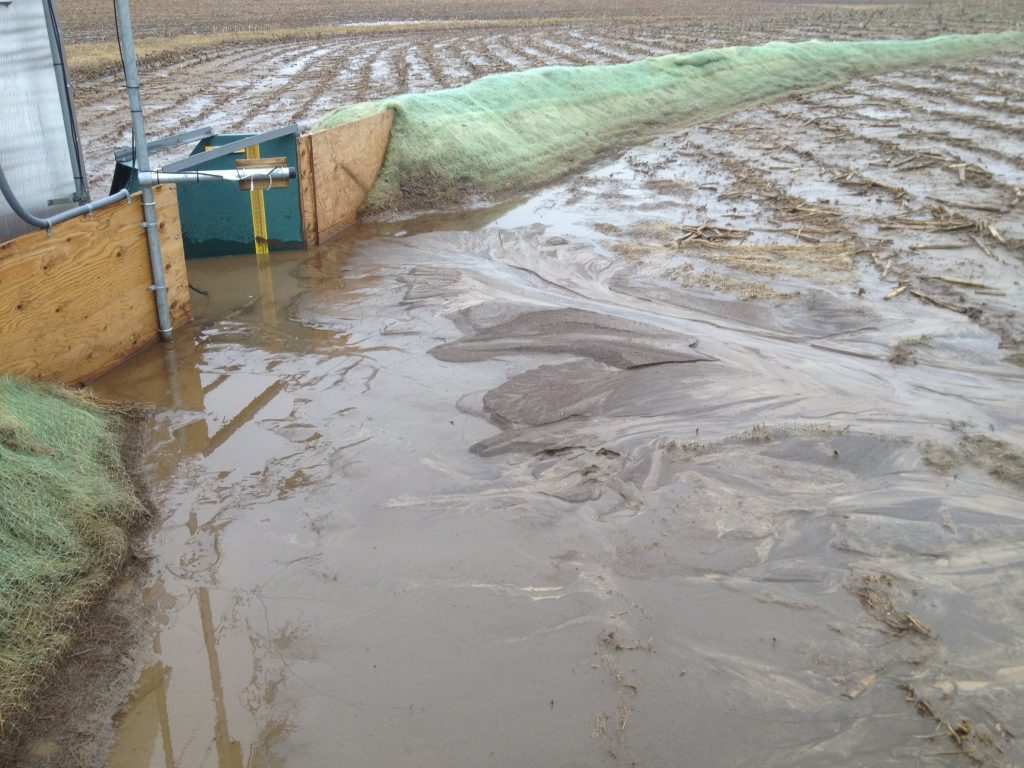This article shares results from a Discovery Farms site study that was conducted in cooperation with USDA-NRCS.
Grassed waterways play a critical role on the landscape by stabilizing areas of concentrated water flow. If grassed waterways are installed properly and have an adequate grass cover, they can significantly reduce sediment and nutrient losses. The roots of the growing grass help to keep sediment and nutrients in place. The grassed waterway helps to catch soil particles carried in runoff as it concentrates and leaves the field. Waterways also help to minimize the impact of large precipitation events by slowing down and infiltrating runoff. When soil remains in place, sediment and nutrients are not transported to nearby streams, rivers, and lakes. This helps to keep our water cleaner and aquatic ecosystems healthier.
Upland and treatment practices protect water quality
There are two types of protection practices in a conservation system: those which keep the movement of soil and nutrients within a field to a minimum (upland practices), and those that address movement off the field (treatment practices). In a conservation system, upland practices like reduced tillage or cover crops must be utilized in combination with treatment practices for beneficial water quality outcomes. Treatment practices like grassed waterways are vital to achieve the intended benefits of upland practices. Grassed waterways must be designed and maintained in areas of concentrated flow within a field. For example, without erosion control from well-maintained grassed waterways, gullies will form and obscure the benefits of practices like cover crops or no-till. These examples illustrate why upland and treatment practices must work as a system to achieve intended benefits.
Protect concentrated flow areas
Discovery Farms has an ongoing edge-of-field monitoring study on a farm in Kewaunee County which started in 2019 that illustrates the impact and importance of stable grassed waterways. This was not the intended topic of the study, but with the runoff results it became obvious that there was something larger occurring. Runoff is collected year-round at a monitoring station to determine the amount of water, soil, and nutrients leaving the field watershed. Samples are taken and analyzed for soil, phosphorus, and nitrogen contained in the runoff. In this particular study, the field has grown corn silage the past four years and utilizes reduced tillage and cover crops. In 2019 and 2020, exceptionally large amounts of runoff, soil, and nutrients were found to be leaving the field. While investigating the reason for such high runoff amounts, it was visually noted that rill and gully erosion were occurring on the site. Even though this site utilized cover crops and reduced tillage, a concentrated flow was forming that ran directly into the collection monitoring station. To reduce the erosion in the area of concentrated flow, a grassed waterway was installed in late summer of 2020.
In the graph below, the data shows that the newly installed waterway aided in significantly reducing soil leaving the field (99% reduction). Even a seemingly small set of rills or a developing small gully can transport thousands of pounds of soil off the field. This field has cover crops and no-tillage in its management, yet large amounts of sediment loss were still occurring. This displays the necessity of utilizing treatment practices in the system.
Precipitation influences runoff
Precipitation and other factors play a role in determining the amount of runoff in a given year. Figure 2 displays the annual precipitation amounts for 2020 and 2021. In both years, precipitation was above the 30-year average, and 2021 had slightly more rainfall than 2020, suggesting that rainfall was not a factor in the surge of soil loss in 2020.
Protecting water quality requires a combination of practices
Utilizing best management practices where necessary can highly impact the landscape and save large amounts of sediment from being lost. Keeping the soil in place keeps sediment and nutrients on the field and out of lakes and streams, positively influencing water quality. There is not one practice that works as a perfect fix alone. Rather, it takes a combination of conservation practices to truly make an impact. This Discovery Farms data shows the importance of using a variety of both upland and treatment practices in the field system to get the full benefit and make an influential change.
Grassed Waterway Resources
The waterway was designed to NRCS standards. To learn more about these standards, visit this link for the technical field guide.
To learn more about the signs of what to look for in your field, and to choose if a grassed waterway is the right practice, visit this Field Walk Over Guide written by Discovery Farms.
Waterway maintenance is very important to maintain their functions. Tips for keeping them functioning after installation can be found here.




 Phosphorus Losses Checked by Layered Practices and Careful Timing: A Discovery Farms Project
Phosphorus Losses Checked by Layered Practices and Careful Timing: A Discovery Farms Project ▶ The Zone of Interaction: Exploring phosphorus stratification
▶ The Zone of Interaction: Exploring phosphorus stratification Wanted: Fields under cover
Wanted: Fields under cover Flood Mitigation and Water Quality in Southwest Wisconsin
Flood Mitigation and Water Quality in Southwest Wisconsin


